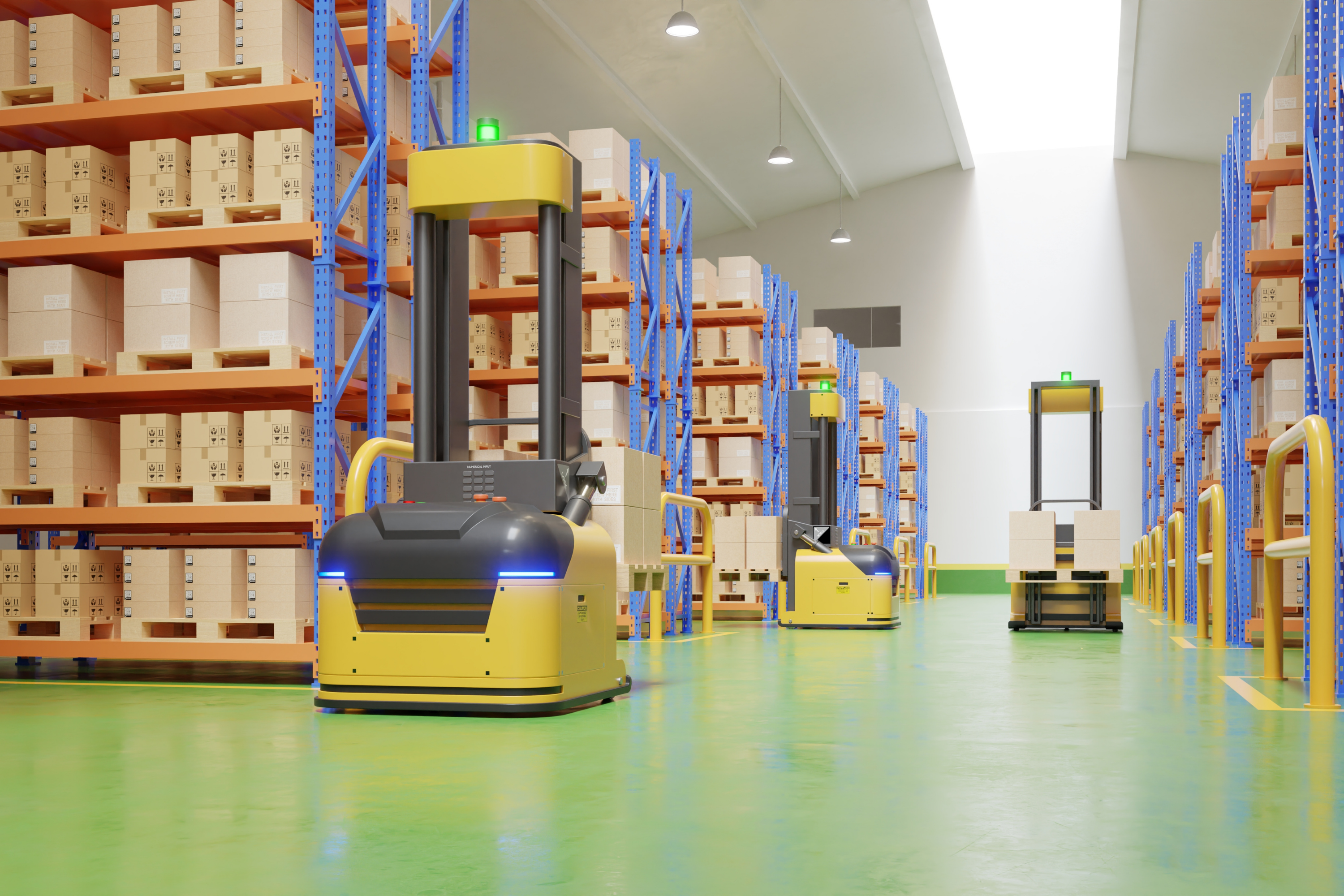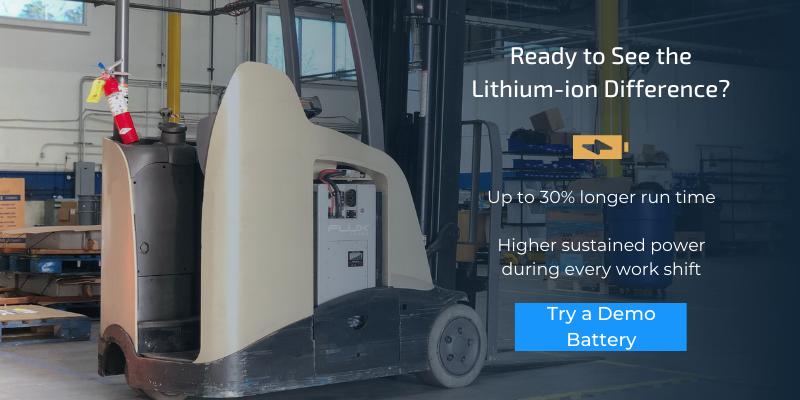Over the past decade, there has been a significant push towards automating many warehousing and manufacturing processes. There has been a spur of automation due to the growing demand of consumers. Because customers expect more product choices, faster delivery times and ease of returning goods, more technological advancements of automation have been made.
As demand for consumer goods has increased, operation managers have had to figure out how to support 24/7 operations and manage those customer expectations. It has been an even bigger challenge doing it during a pandemic that:
- Kept people isolated in their homes
- Sparked ongoing labor shortages
With the demand for customer goods, warehouses are accelerating a trend for automation.
The Future is Automated
Warehouse automation is the answer. Warehouse automation brings many benefits to users.
Two automation solutions that have become increasingly popular are Automated guided vehicles (AGVs) and Autonomous mobile robots (AMRs).
AGVs and AMRs are machines designed to perform material handling in manufacturing facilities and warehouses without the use of an operator or driver. AGVs are guided by sensors, markers, magnets, tape, or wires in the facility. They have a fixed navigational route.
AMRs are more technologically advanced than AGVs. They move around the facility based on the most efficient path using cameras and sensors. AMRs can navigate around obstacles, unlike AGVs. AMRs can also adapt to their surroundings, interact, and cooperate with warehouse employees.
AGVs and AMRs both provide very high ROI and uptime because they do not require the use of an operator. AGVs and AMRs eliminate the cost of human errors. This can result in improved warehouse and operational workflows. AGVs and AMRs are the future for automating material handling tasks in manufacturing facilities and warehouses.
What’s Behind the Push for Warehouse Automation
There are three main reasons behind the push to automate warehouses and manufacturing plants:
- Tight labor market makes it difficult to hire people to fill positions
- Increased demand for efficiencies in operations
- More pressure to hit KPI targets to maximize ROI
Adopting lithium-ion powered AGVs and AMRs can remove the stress of finding labor for those positions.
The demand for increased warehouse efficiencies require 24/7 operations. Lithium-ion battery powered AGVs and AMRs are a great solution for multi-shift because they can work long hours and never get tired.
Most AGVs and AMRs manufacturers are looking towards lithium-ion technology to maximize efficiency. Lithium-ion technology is helping power warehouse automation because the battery packs last longer and require no maintenance. This means less downtime.
While consumer demand continues to skyrocket, it becomes more difficult to hit productivity goals. Warehouse automation can help operations meet their KPIs.
Labor Shortages
Due to the pandemic, many warehouses and manufacturing plants have struggled to find additional labor to keep up with consumer demand.
The pandemic has also hindered the ability of warehouses to find forklift operators. Forklift operators are scarce because not enough new operators are being trained.
Automation can reduce these physically labor-intensive duties. AGVs and AMRs can help complete tasks in warehouses and manufacturing facilities.
Safety and Human Error
Automation also reduces the impact of human error and increases overall warehouse safety - especially considering lithium-ion batteries have no required maintenance and don’t include hazardous materials like lead acid batteries.
Lead acid battery maintenance is labor intensive. Warehouse workers need to be present to ensure preventative maintenance is being done to the lead acid battery. Lead acid maintenance issues can involve:
- Over-watering degrading the chemical process
- Over-charging generating gaseous pressure
- Skipping a cool down period producing high amounts of heat
Productivity in warehouse operations and workflows are reduced because of the need for maintenance. Lithium-ion batteries for autonomous vehicles need less attention. Automation has and will continue to change the landscape of material handling.
Increased Demand on Efficiencies & Throughput
The increased demand of consumers calls for a need to increase efficiencies for warehouses and manufacturing facilities. Automated equipment are more efficient than humans because they don’t require the same downtime. AGVs and AMRs never tire of repeating the same process. The only downtime an automated vehicle needs is when it needs to recharge its battery or if it needs maintenance.
AGVs and AMRs with lithium-ion batteries can be opportunity charged whenever operators take breaks, which provides more flexibility. In 15 or 30 minutes, a lithium-ion battery can be opportunity charged without damaging the cell’s capacity and allowing the battery to last through the rest of the shift.
Warehouse automation can help increase efficiencies so that suppliers can respond to the ever-growing demand from eCommerce.
Hitting KPIs & Improving ROI
Converting your warehouse processes to automated flows can help you hit your KPIs and improve your ROI. Automation helps you get the most out of your warehouse operations. AMRs and AGVs help hit KPIs by increasing uptime with low-maintenance solutions. A great example of a low-maintenance solution is a lithium-ion battery.
Labor costs add up for many warehouse operations. By switching to lithium-ion batteries, managers can see a reduction in downtime and better efficiencies for warehouse operations.
As a result, managers can run a leaner operation. Operations will likely also have better inventory management because of less human error.
Join the Automation Revolution with Lithium-Ion Power
Lithium-ion technology is the future because there are no shortages of benefits. Operation professionals can worry less about staffing shortages and focus on meeting the ever-increasing demand from consumers.
To maintain productivity, it is essential to have a lithium-ion battery pack that can last multiple shifts. Lithium-ion batteries last throughout long shifts and can be fully charged in 1 to 2 hours. Using a battery with a simple charging process makes it easier for warehouse workers to improve operational efficiencies.
As demand for consumer goods increase, some warehouses need to respond by increasing their production. Operation managers should consider utilizing AGVs and AMRs that use lithium-ion batteries as a power source.
Converting material handling fleets to AMRs and AGVs can help warehouses improve efficiency. With the increase in demand from consumers, using lithium-ion technology is the best way to power those AMRs & AGVs.












